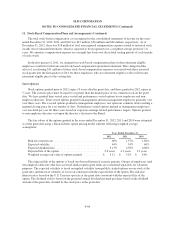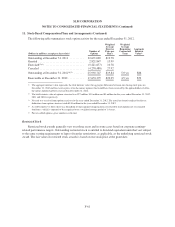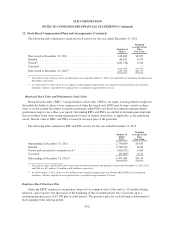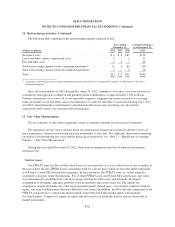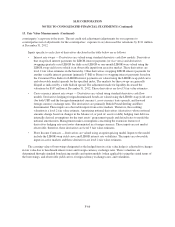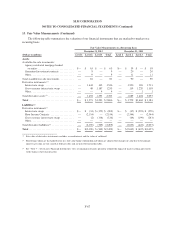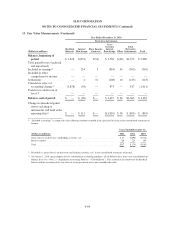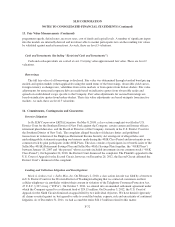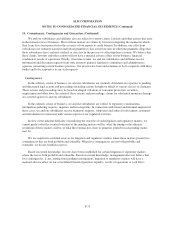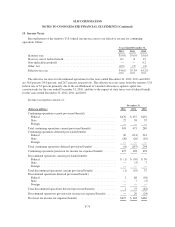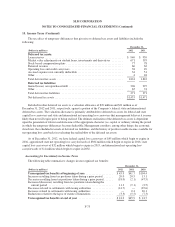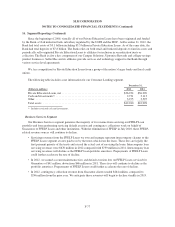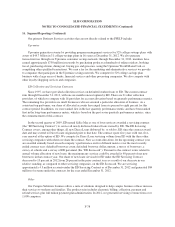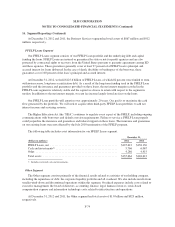Sallie Mae 2012 Annual Report Download - page 180
Download and view the complete annual report
Please find page 180 of the 2012 Sallie Mae annual report below. You can navigate through the pages in the report by either clicking on the pages listed below, or by using the keyword search tool below to find specific information within the annual report.
SLM CORPORATION
NOTES TO CONSOLIDATED FINANCIAL STATEMENTS (Continued)
13. Fair Value Measurements (Continued)
The following table presents the significant inputs that are unobservable or from inactive markets used in
the recurring valuations of the level 3 financial instruments detailed above.
(Dollars in millions)
Fair Value at
December 31, 2012
Valuation
Technique Input
Range
(Weighted Average)
Derivatives
Consumer Price Index/LIBOR
basis swaps .............. $ 92 Discounted cash flow
Bid/ask adjustment
to discount rate
0.02% — 0.04%
(0.05%)
Prime/LIBOR basis swaps .... (165) Discounted cash flow Constant prepayment rate 4.3%
Bid/ask adjustment to
discount rate
0.08% — 0.08%
(0.08%)
Cross-currency interest rate
swaps ................... 1,053 Discounted cash flow Constant prepayment rate 2.6%
Other ..................... 4
Total ..................... $ 984
The significant inputs that are unobservable or from inactive markets related to our level 3 derivatives
detailed in the table above would be expected to have the following impacts to the valuations:
• Consumer Price Index/LIBOR basis swaps — These swaps do not actively trade in the markets as
indicated by a wide bid/ask spread. A wider bid/ask spread will result in a decrease in the overall
valuation.
• Prime/LIBOR basis swaps — These swaps do not actively trade in the markets as indicated by a wide
bid/ask spread. A wider bid/ask spread will result in a decrease in the overall valuation. In addition, the
unobservable inputs include constant prepayment rates of the underlying securitization trust the swap
references. A decrease in this input will result in a longer weighted average life of the swap which will
increase the value for swaps in a gain position and decrease the value for swaps in a loss position,
everything else equal. The opposite is true for an increase in the input.
• Cross-currency interest rate swaps — The unobservable inputs used in these valuations are constant
prepayment rates of the underlying securitization trust the swap references. A decrease in this input
will result in a longer weighted average life of the swap. All else equal in a typical currency market,
this will result in a decrease to the valuation due to the delay in the cash flows of the currency
exchanges as well as diminished liquidity in the forward exchange markets as you increase the term.
The opposite is true for an increase in the input.
F-70


